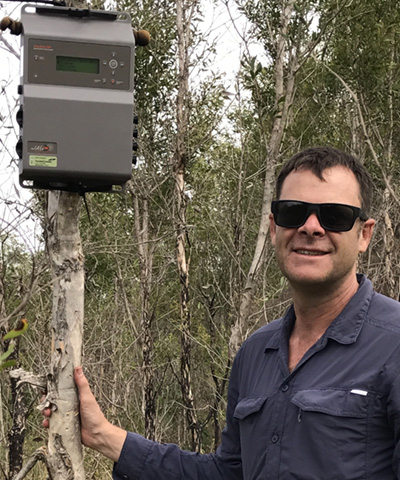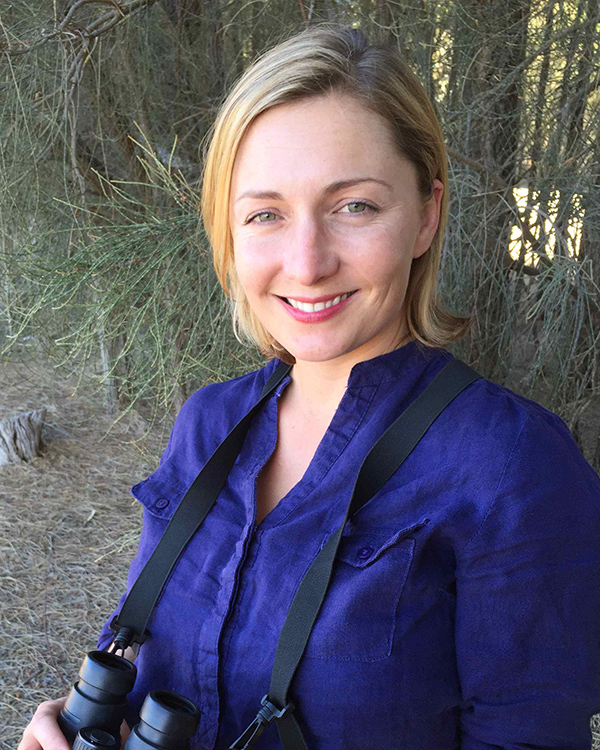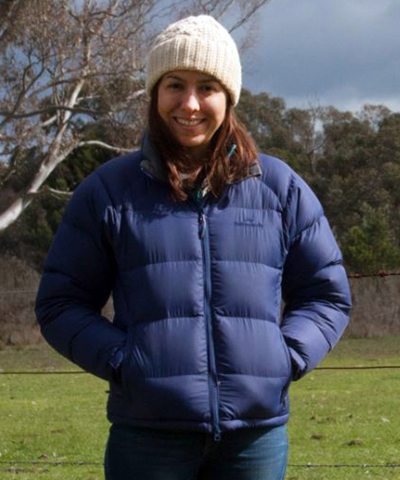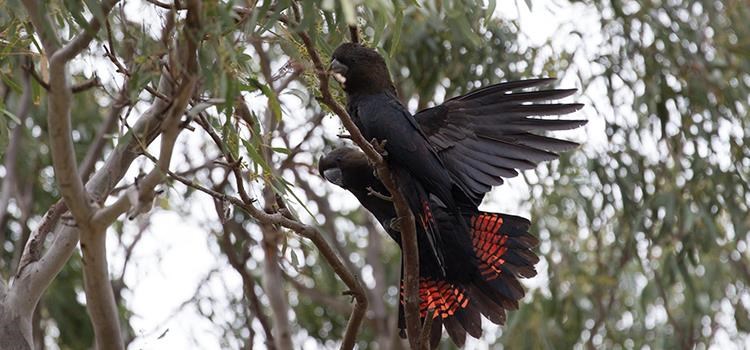
Project: 3.2.2.4
Bioacoustic monitoring of breeding in glossy and red-tailed black-cockatoos
Project Leaders: Berndt van Rensburg , Martine Maron
Research in Brief
Breeding success is a key limiting factor in population recovery for the threatened glossy black-cockatoo and south-eastern red-tailed black-cockatoo. Monitoring is important to guide conservation actions, however these species are difficult to monitor using traditional methods. This project will develop novel bioacoustic methods to monitor breeding in these species.
Why is the research needed?
The glossy black-cockatoo (Calyptorhynchus lathami) and the south-eastern red-tailed black-cockatoo (C. banksii graptogyne) are listed as threatened under Australian and state laws. The latter is also included in the Australian government’s top 20 priority bird species for conservation attention.
Breeding success is considered a key limiting factor in their recovery. Conservation managers want to target conservation actions to improve breeding outcomes, but currently have little evidence to guide them, due to a lack of monitoring data on breeding success, and how this relates to key habitat variables known to influence breeding (e.g. food supply).
Breeding in the red-tailed and glossy black-cockatoos is difficult to monitor using traditional human-observer methods, owing largely to the challenges of requiring human observers at nests, which are usually rare, remote and on private land. As such, breeding in these species is usually not monitored in a formal capacity, and we currently have a limited understanding of the dynamics of breeding and breeding success.
For breeding to be feasibly monitored in the future, new methods that are accurate, efficient, and have smaller human resource requirements are needed.
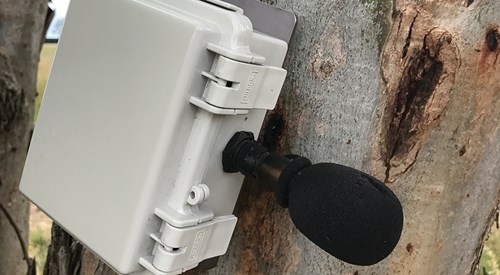 Image: Sound recorder on nest tree, up close. Photo: Daniella Teixeira
Image: Sound recorder on nest tree, up close. Photo: Daniella Teixeira
How will the research help?
This project will investigate the feasibility of using bioacoustic methods to monitor breeding in the glossy and red-tailed black-cockatoos.
While the vocalisations of these birds during breeding are not yet known (this project seeks to describe these), they are expected to produce several vocalisations that may lend themselves to bioacoustic approaches (e.g. vocalisations that relate to a nestling’s age, or indicate a fledging event). If these vocalisations are detectable by bioacoustic methods, bioacoustic monitoring could be used to quantify nest survival (or time of nest failure).
However, for bioacoustics to be useful to managers, and incorporated into conservation programs, it is critical that methods to efficiently process massive volumes of acoustic data are developed. As such, this project aims to develop automated or semi-automated methods for detecting key breeding-related vocalisations from long-term sound recordings.
Importantly, the methods developed must be easily implementable by the non-expert. If this is achieved, this project will provide managers with a reliable and repeatable method for the long-term monitoring of breeding in the glossy and red-tailed black-cockatoos, without the need for intensive human effort.
Data from such a program would help to inform decisions that relate to breeding success, such as food habitat protection in relation to nesting habitat, fire planning and spatial arrangement of artificial nest hollows.
What research activities are being undertaken?
Key research activities include:
- Locating nests and installing autonomous sound recorders at nest trees
- Collecting sound data from nest trees for the duration of the nesting period – until fledging or nest failure. Sound recorders are programmed to record at specific times of the day, depending on the stage of the nest.
- Where possible, using camera traps to ‘ground-truth’ behaviours at nests.
- Conducting extensive behavioural observations (including filming) at nests, particularly from the time the nestling starts vocalising until fledging.
- Describing the vocalisations and associated behaviours that occur during the nesting period.
- Trialling various call recognition algorithms for the key breeding-related vocalisations that we want to detect from the sound recordings.
- Investigating differences in vocal behaviours and nest survival rates in relation to food availability.
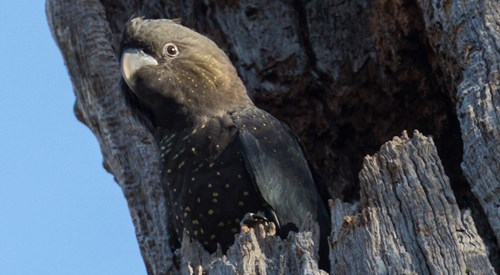 Image: Glossy Nestling. Photo: Daniella Teixeira
Image: Glossy Nestling. Photo: Daniella Teixeira
Who is involved?
This research is led by The University of Queensland, with significant input from the Victorian Government (Department of Environment, Land, Water and Planning) and the South Australian Government (Natural Resources Kangaroo Island). The Ecosounds Lab at the Queensland University of Technology are involved in sound data handling and processing.
The project is also supported by the Glossy Black Conservancy and Birdlife Australia’s South-eastern Red-tailed Black-cockatoo Recovery Team.
Where is the research happening?
Research on the south-eastern red-tailed black-cockatoo is being conducted in far south-west Victoria. Research on the glossy black-cockatoo is happening primarily on Kangaroo Island in South Australia. Some research on glossy black-cockatoos in Queensland is also planned. 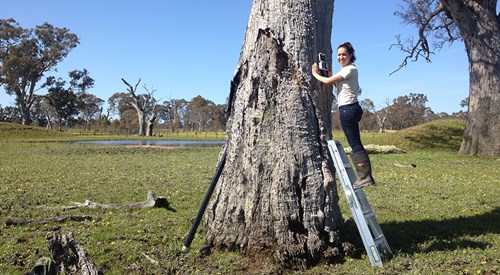
Image: Daniella Teixeira installing a sound recorder on a nest tree. Photo: Richard Hill
When is the research happening?
The project will run from 2016 to mid 2021. Acoustic monitoring is occurring at all times of the year in either Victoria or on Kangaroo Island (depending on which population is breeding).
More Information
For more information, contact:
Daniella Teixeira — d.teixeira@uq.edu.au
Top image: Young Kangaroo Island glossy black cockatoo males. Photo: Daniella Teixeira
-
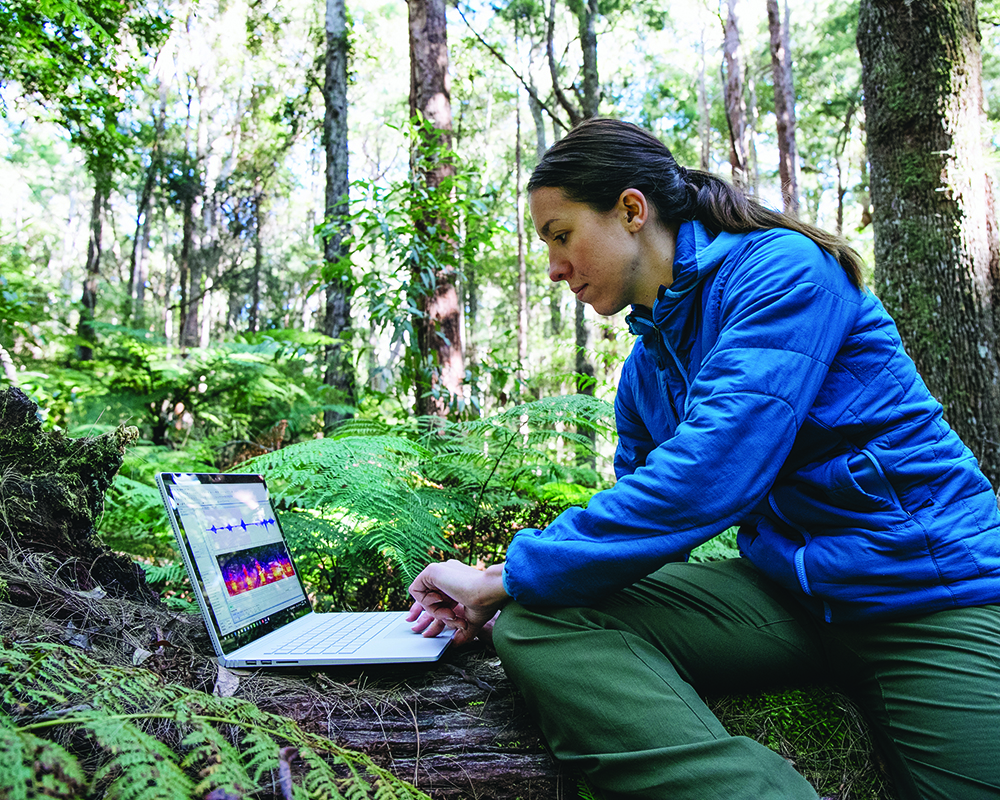
Filling the breeding knowledge gap: Bioacoustic monitoring of Endangered black-cockatoos
Monday, 24 September 2018 -
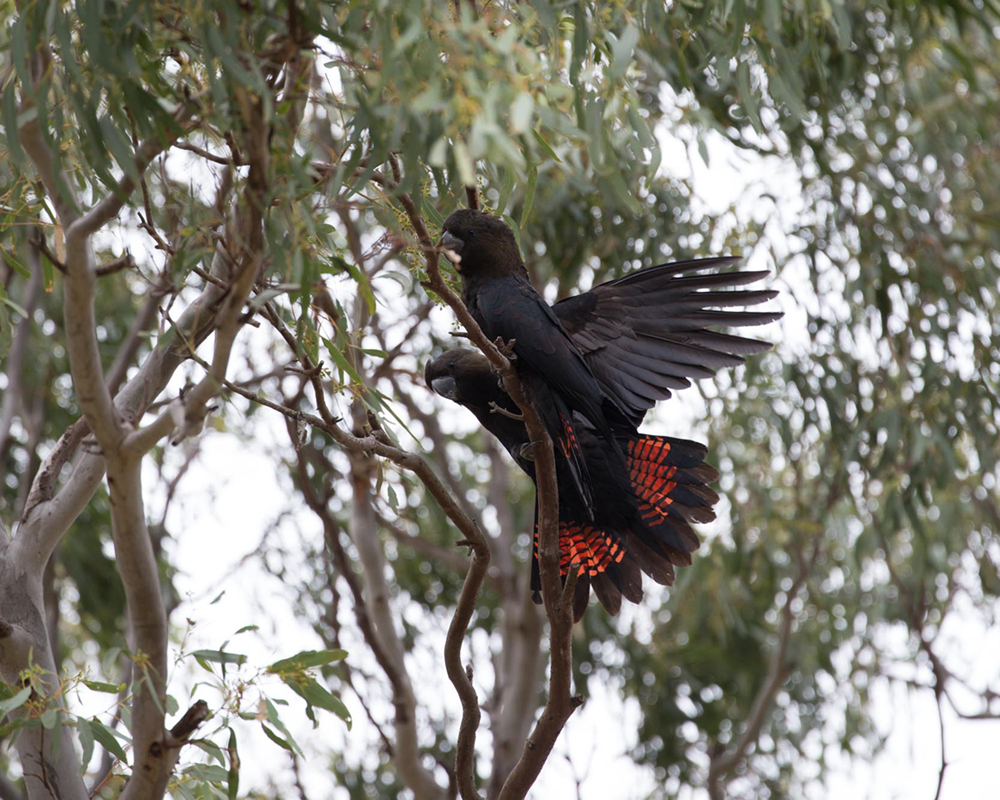
Success for Kangaroo Island’s glossy-black cockatoos
Tuesday, 29 May 2018 -
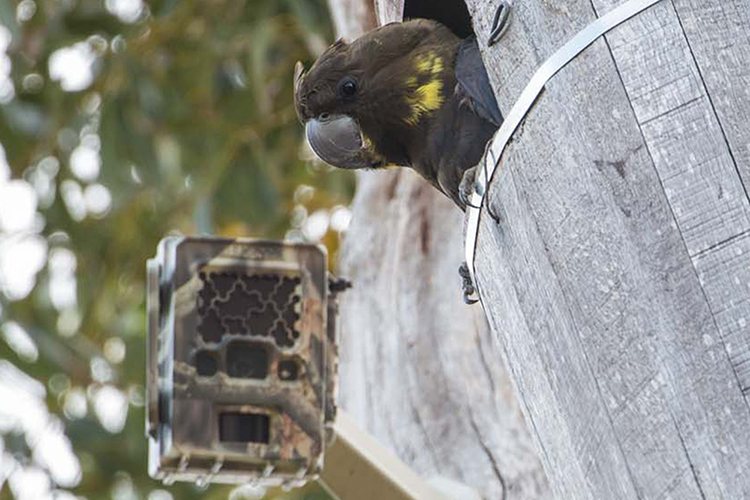
Acoustic monitoring to fill knowledge gaps about cockatoo breeding
Saturday, 21 October 2017 -
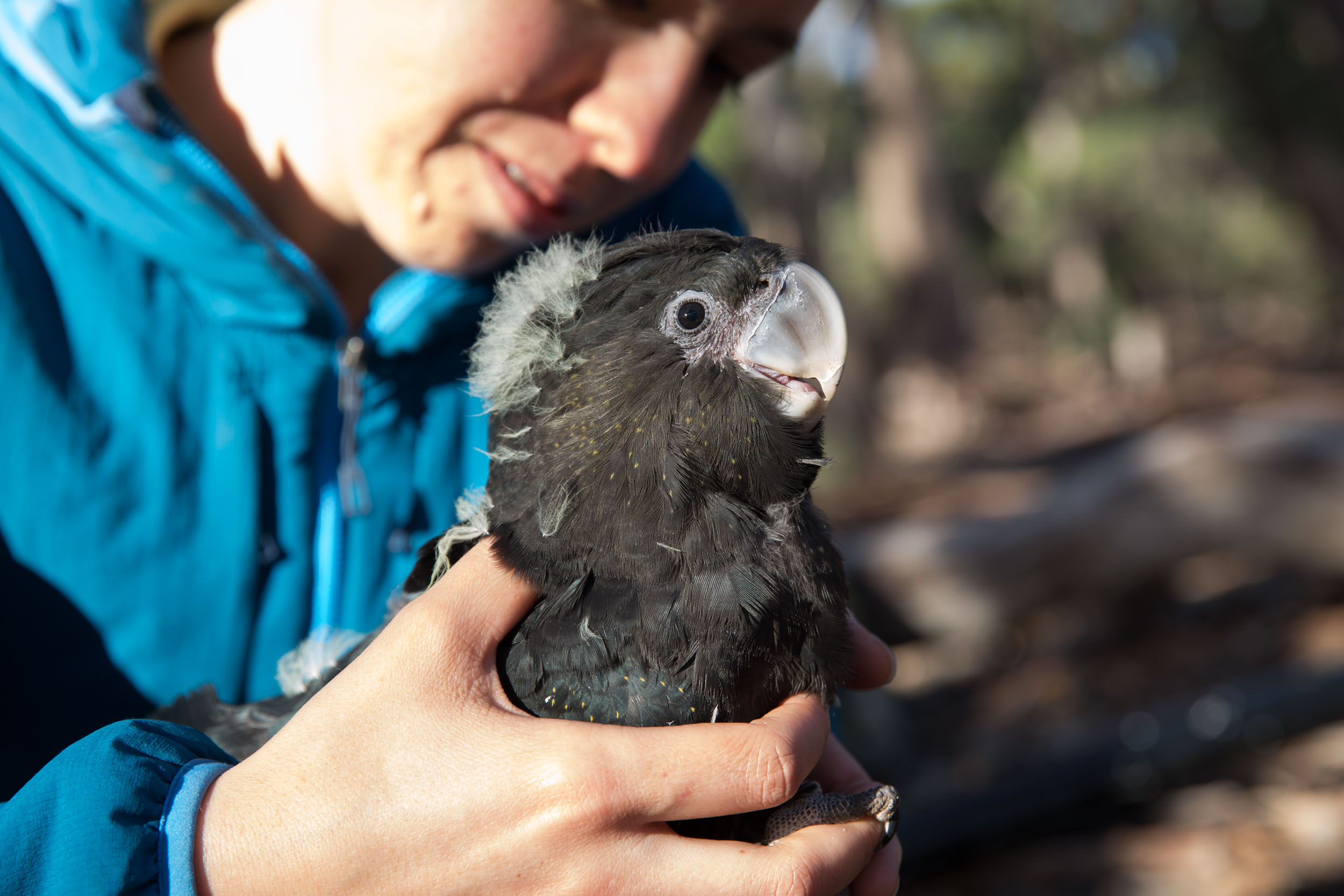
Researchers tune in to nesting calls to help rare cockatoos
Tuesday, 05 September 2017


